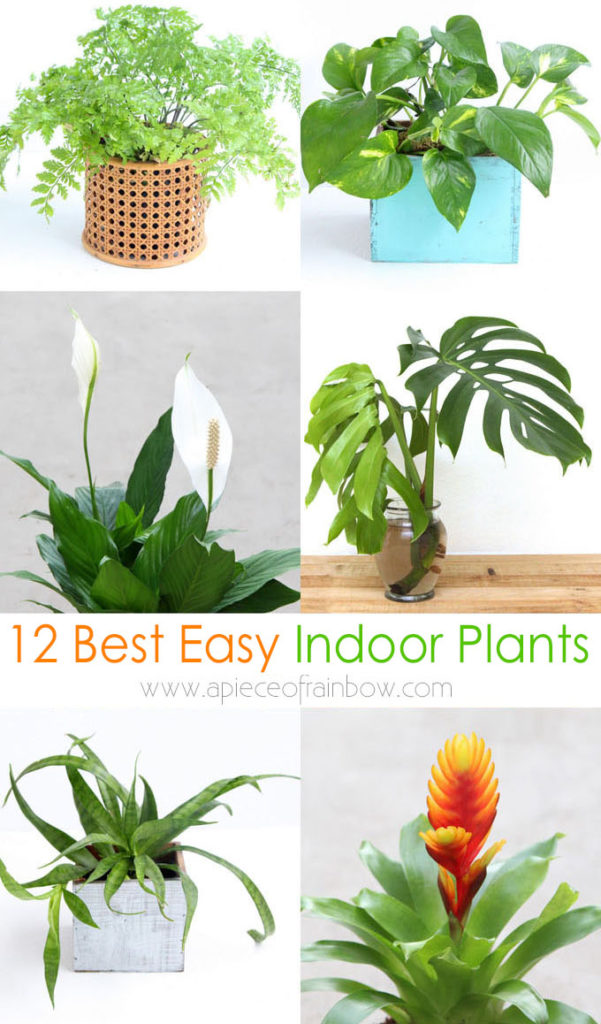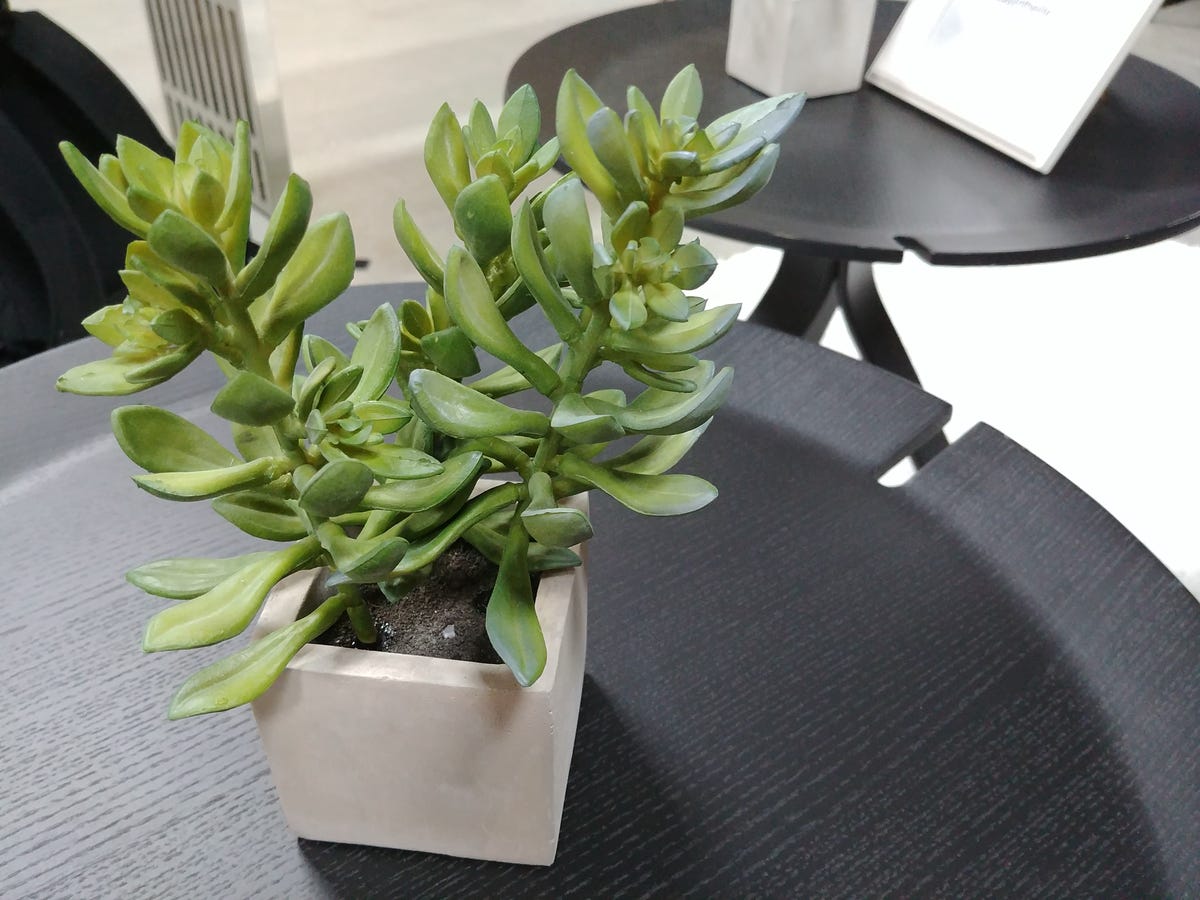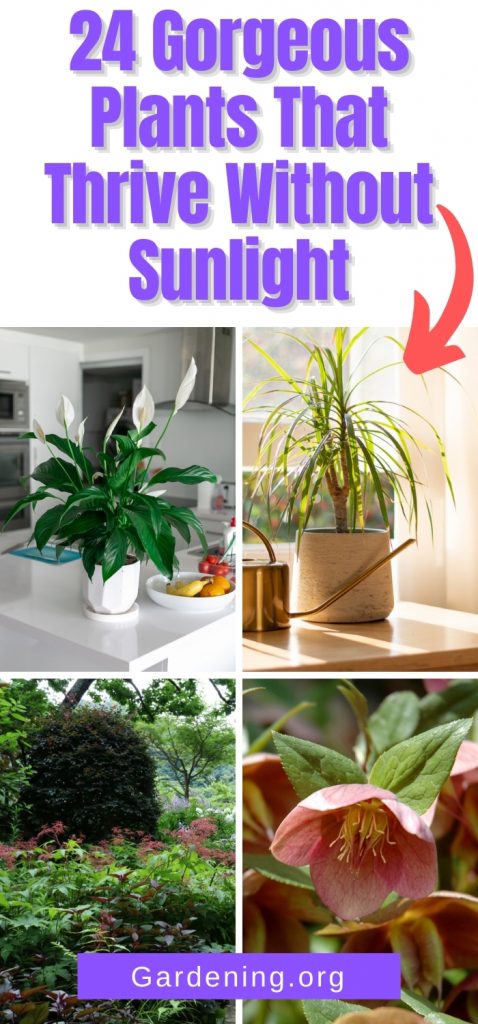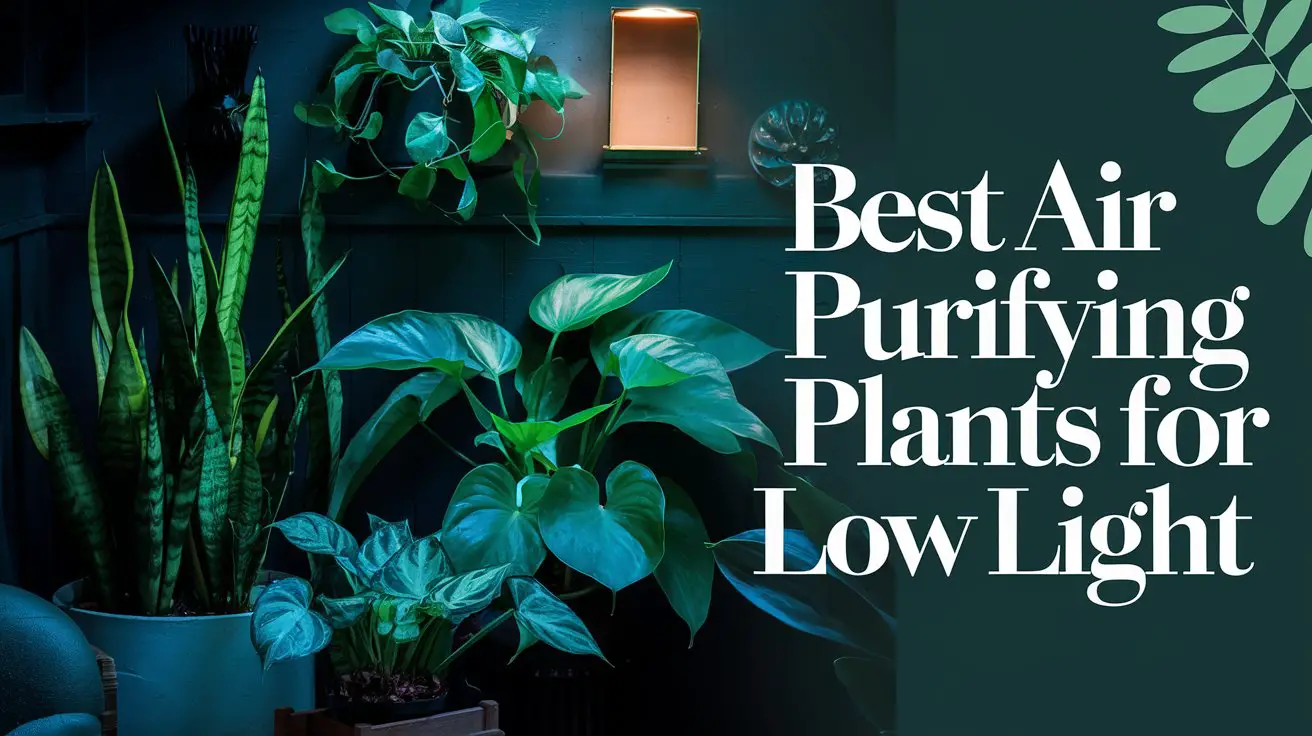Best air purifying plants for low light include Snake Plant and ZZ Plant. They thrive in dim conditions and improve air quality.
Indoor plants not only beautify spaces but also purify the air. Snake Plant, also known as Sansevieria, is a hardy plant that tolerates low light and neglect. It removes toxins like formaldehyde and benzene. Another excellent choice is the ZZ Plant, or Zamioculcas zamiifolia, which thrives in low light and requires minimal care.
Both plants are perfect for offices or homes with limited sunlight. These plants improve indoor air quality by absorbing pollutants and releasing oxygen, making them ideal for creating a healthier living environment. Investing in low-light air purifying plants is a simple yet effective way to enhance well-being.

Credit: www.apieceofrainbow.com
Introduction To Air Purifying Plants
Air purifying plants make our homes healthier. These plants clean indoor air. Many of them thrive in low light. They are perfect for rooms with little sunlight. These plants are easy to care for. They add beauty and freshness to your space.
Importance Of Clean Air
Clean air is crucial for good health. Polluted air can cause many problems. It can make you cough and sneeze. Some pollutants are even harmful in small amounts. Indoor air can be worse than outdoor air. This is because it can trap pollutants inside. Air purifying plants help reduce these indoor pollutants.
Benefits Of Indoor Plants
Indoor plants have many benefits. They improve air quality. They reduce stress and make you feel calm. They can boost your mood and creativity. Plants also add color and life to your home. They are natural air purifiers.
| Plant Name | Light Requirement | Air Purifying Benefits |
|---|---|---|
| Snake Plant | Low to Medium | Removes toxins like formaldehyde |
| Spider Plant | Low | Effective against carbon monoxide |
| Peace Lily | Low to Medium | Removes ammonia and benzene |
How Plants Purify Air
Air purifying plants are not just beautiful. They also cleanse our air. Understanding how plants purify air can help us choose the best ones for our homes. Let’s dive into the fascinating world of natural air filtration.
Natural Filtration Process
Plants use a natural process to clean the air. This process is called photosynthesis. During photosynthesis, plants absorb carbon dioxide and release oxygen. This exchange helps improve air quality. But that’s not all. Plants also absorb other harmful substances through their leaves and roots.
Another important process is called phytoremediation. Through phytoremediation, plants absorb pollutants from the air and soil. These pollutants are then broken down into harmless substances. This helps to reduce the number of toxins in the environment.
Plants also release water vapor through a process called transpiration. This increases humidity levels, which can be beneficial for our health. Higher humidity can help reduce respiratory issues and improve skin hydration.
Common Pollutants Removed
Many plants are effective at removing common indoor pollutants. Here are some examples:
- Formaldehyde: Found in household products like cleaners and furniture.
- Benzene: Present in tobacco smoke and synthetic fibers.
- Trichloroethylene: Often found in adhesives and paint removers.
- Xylene: Used in various solvents and cleaning agents.
- Ammonia: Common in household cleaners and fertilizers.
By placing air purifying plants in your home, you can reduce these harmful pollutants. This creates a healthier living environment for you and your family.
| Plant Name | Pollutants Removed |
|---|---|
| Spider Plant | Formaldehyde, Xylene |
| Snake Plant | Formaldehyde, Benzene, Trichloroethylene |
| Peace Lily | Formaldehyde, Benzene, Trichloroethylene, Xylene, Ammonia |
| Boston Fern | Formaldehyde, Xylene |
Choosing the right plants can make a big difference. Not only do they beautify your space, but they also improve air quality. Consider adding some of these amazing air purifying plants to your home.
Criteria For Low Light Plants
Choosing the best air-purifying plants for low light can be challenging. Not all plants thrive in low light. It’s essential to consider specific criteria before making a decision. This section explores the critical factors for selecting the best low-light air purifying plants.
Light Requirements
Plants need light to perform photosynthesis. For low light environments, select plants that require minimal light. These plants often come from shaded forest floors. They are adapted to lower light levels.
Snake Plant and ZZ Plant are excellent choices. They can thrive in dimly lit rooms. Pothos and Peace Lily also do well with minimal sunlight.
Adaptability To Indoor Conditions
Indoor conditions differ from the natural environment. Plants must adapt to lower humidity and stable temperatures. Spider Plant and Chinese Evergreen are highly adaptable. They adjust well to indoor settings.
It’s also important to consider the plant’s tolerance to neglect. Busy schedules may mean irregular watering. Philodendron and Dracaena are hardy plants. They tolerate occasional forgetfulness.
| Plant | Light Requirement | Adaptability |
|---|---|---|
| Snake Plant | Low Light | High |
| ZZ Plant | Low Light | High |
| Spider Plant | Low to Medium Light | High |
| Philodendron | Low to Medium Light | High |
Selecting the right plants ensures a healthier indoor environment. Prioritize light requirements and adaptability. This ensures your plants thrive and purify the air.
Top Air Purifying Plants For Low Light
Discover the best air purifying plants that thrive in low light. These plants not only clean the air but also add beauty to your space. Perfect for homes and offices with limited sunlight.
Snake Plant
The Snake Plant is a hardy plant. It tolerates low light and neglect. Its upright leaves are perfect for tight spaces. This plant removes toxins like formaldehyde and benzene from the air. It’s also known as the Mother-in-Law’s Tongue.
Zz Plant
The ZZ Plant is almost indestructible. It thrives in low light and dry conditions. Its waxy, dark green leaves add elegance. This plant filters xylene, toluene, and benzene. It’s ideal for beginners.
Pothos
Pothos is a vining plant that grows well in low light. Its heart-shaped leaves come in various colors. This plant removes formaldehyde, xylene, and benzene. It’s a great choice for hanging baskets or shelves.
Spider Plant
The Spider Plant is easy to grow. It adapts to low light and produces baby plants. This plant is excellent at removing carbon monoxide and formaldehyde. Its arching leaves make it visually appealing.
Peace Lily
The Peace Lily is known for its white blooms. It thrives in low light and damp soil. This plant filters ammonia, benzene, and formaldehyde. Its lush foliage adds a touch of elegance.
Care Tips For Low Light Plants
Low light plants are perfect for spaces with minimal sunlight. These plants thrive in shaded corners, making them ideal for homes and offices. Below are some essential care tips for keeping these plants healthy and vibrant.
Watering Guidelines
Watering low light plants can be tricky. It’s important to avoid overwatering, as this can lead to root rot.
- Check the soil moisture before watering.
- Water only when the top inch of soil is dry.
- Use room temperature water for best results.
For most low light plants, watering once a week is sufficient. Adjust based on the plant’s needs and environmental conditions.
Soil And Fertilizer Needs
Choosing the right soil and fertilizer is crucial for low light plants. They need well-draining soil to prevent waterlogging.
| Soil Type | Features |
|---|---|
| Potting Mix | Light, well-draining, and nutrient-rich |
| Cactus Mix | Excellent drainage, suitable for succulents |
Fertilize low light plants during their growing season, typically spring and summer. Use a balanced, water-soluble fertilizer once a month.
- Mix fertilizer at half strength.
- Avoid fertilizing in winter.
- Watch for signs of over-fertilizing like yellowing leaves.
Following these care tips will keep your low light plants healthy and happy.

Credit: www.cnet.com
Placement Ideas For Maximum Effect
When considering air purifying plants, placement is key for maximum effect. The right spot can enhance their ability to clean the air and thrive. Let’s explore some optimal placement ideas for both home and office environments.
Best Spots In Home
Placing air purifying plants in your home can greatly improve air quality. Here are some of the best spots:
- Living Room: Place a Spider Plant on a coffee table or shelf.
- Bedroom: Set a Snake Plant on your nightstand for better sleep.
- Bathroom: A Bamboo Palm on the counter can thrive in low light and humidity.
- Kitchen: A Philodendron on top of the fridge can purify the air and add greenery.
Office Environment Tips
In an office, plants can improve air quality and productivity. Consider these tips:
- Desk: Place a small Pothos on your desk for a touch of green.
- Corner: A larger Rubber Plant can brighten a dark corner.
- Reception Area: A Peace Lily can create a welcoming atmosphere.
- Conference Room: Add a Chinese Evergreen to cleanse the air during meetings.
By strategically placing these air purifying plants, you can enjoy cleaner air and a touch of nature in any space.
Combining Plants For Enhanced Purification
Combining different air-purifying plants can enhance indoor air quality. These combinations look beautiful and improve your home’s atmosphere. Grouping plants together helps create a mini ecosystem. This boosts the plants’ ability to purify the air.
Plant Pairing Ideas
Pairing different plants helps maximize their air-purifying effects. Here are some great combinations:
- Snake Plant and Spider Plant: Both plants are easy to care for and thrive in low light. They remove toxins like formaldehyde and xylene.
- Peace Lily and Boston Fern: These plants love humid environments. They are excellent at removing mold spores and other toxins.
- ZZ Plant and Pothos: These hardy plants require minimal care. They are effective at removing benzene and toluene from the air.
Creating A Green Corner
Designing a green corner in your home adds beauty and boosts air quality. Follow these steps:
- Choose a low-light area: Select a spot in your home with indirect sunlight.
- Select a variety of plants: Pick plants that thrive in low light and purify the air.
- Arrange your plants: Use different heights and pot sizes to create visual interest.
- Ensure proper drainage: Use pots with drainage holes to prevent overwatering.
- Maintain your green corner: Water your plants regularly and check for pests.
| Plant Name | Light Requirement | Primary Toxin Removed |
|---|---|---|
| Snake Plant | Low Light | Formaldehyde |
| Spider Plant | Low Light | Xylene |
| Peace Lily | Low Light | Mold Spores |
| Boston Fern | Low Light | Mold Spores |
| ZZ Plant | Low Light | Benzene |
| Pothos | Low Light | Toluene |

Credit: gardening.org
Common Mistakes To Avoid
Air purifying plants in low light can thrive with proper care. Yet, many plant lovers make common mistakes. This guide will help you avoid these pitfalls.
Overwatering Issues
Overwatering is a frequent mistake with low light plants. These plants need less water because they grow slowly in low light. Too much water can lead to root rot.
To prevent overwatering:
- Check the soil before watering.
- Use pots with drainage holes.
- Water only when the top inch of soil is dry.
| Plant | Watering Frequency |
|---|---|
| Snake Plant | Every 2-3 weeks |
| ZZ Plant | Once a month |
Inadequate Light Concerns
Low light plants still need some light to photosynthesize. Placing them in complete darkness can harm them.
Ensure your plants get some indirect light:
- Place plants near north-facing windows.
- Avoid direct sunlight that can scorch leaves.
- Rotate plants weekly for even light exposure.
Low light doesn’t mean no light. Give your plants the light they need to stay healthy.
Frequently Asked Questions
What Plant Purifies The Air The Most?
The plant that purifies air the most is the Snake Plant. It removes toxins like formaldehyde and benzene efficiently.
What Is The Best Plant For Low Lighting?
The best plant for low lighting is the snake plant. It’s hardy, low-maintenance, and thrives in dim conditions.
Which Plant Is Best For A Bedroom For Oxygen?
The Snake Plant is best for a bedroom for oxygen. It releases oxygen at night, improving air quality.
Do Plants Purify Air At Night?
Most plants do not purify air at night. They release carbon dioxide in the dark. Some plants, like succulents, continue to absorb carbon dioxide and release oxygen at night. For better air quality, consider adding these specific plants to your indoor garden.
Conclusion
Choosing the best air-purifying plants for low light can enhance your indoor space. These plants not only clean the air but also add beauty to your home. Consider adding a few to your living area or office for a fresher environment.
Start enjoying the benefits of cleaner air and a more vibrant space today.

My mission is to help you bring the beauty of nature indoors with expert advice, detailed plant care guides, and creative design ideas.




